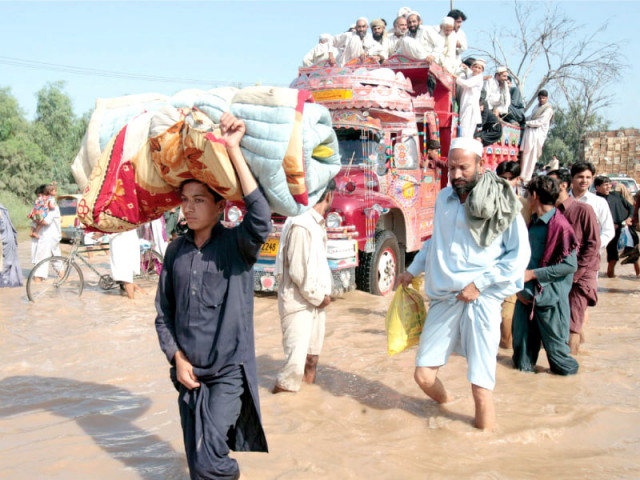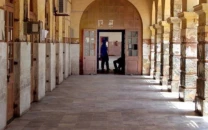Sindh’s disaster management plan only for 5% of people: report
Civil society volunteers stress the need to include people in the planning process.

The National Contingency Plan-2012 chalked out by the National Disaster Management Authority (NDMA) anticipates that 29.2 million people would be in critical need of relief in case any disaster strikes in Sindh. But the plan is only effective for the rescue and relief of a population of 1.46 million, stated the Peoples Accountability Commission on Floods, a network of civil society organisations, in its latest report.
The report criticises the government’s preparedness to deal with disaster-like situations, despite the fact that the country is vulnerable to drought, floods and earthquakes.
According to the report, disaster contingency plans at district levels are the most important, but a recent survey in different districts revealed that people living in the Tharparkar, Sanghar, Mirpurkhas, Qamber-Shadadkot, Dadu and Thatta districts were not even consulted in the process. Even the commission members were not aware of such a contingency plan for 2012.
The report states that there was no proper mapping of union councils to identify the disaster-prone areas and the availability of financial and human resources.
The disaster management authorities working in districts are not functional and are ill equipped without any funds or comprehensive database.
The districts contingency plan has identified the role and responsibility of departments concerned, which is practically the opposite, the civil society report added.
The provincial relief department, district governments and the Provincial Disaster Management Authority all have different versions to deal with disasters. “They have demanded lucrative budgets rather than properly planning how the funds would be spent,” it was alleged.
According to the National Contingency Plan-2012, the monitoring rooms in districts have been operational (24 hours) from July last year. But the accountability commission, referring to its recent survey, contradicted the claim.
“The control rooms are not functional and the communities had no information about the contact details or the locations of the control rooms to register their complaints,” it was stated in the report.
In its recommendations, the commission stated that the disaster management plans should be prepared in consultation with the disaster-affected communities, civil society and other stakeholders.
Any plans prepared by the districts should be translated into local languages to educate the communities with the possible actions to be taken during the emergency. The latest contingency plan should be made available online so that information can be shared with everyone, the report also suggested.
Published in The Express Tribune, September 5th, 2012.



















COMMENTS
Comments are moderated and generally will be posted if they are on-topic and not abusive.
For more information, please see our Comments FAQ